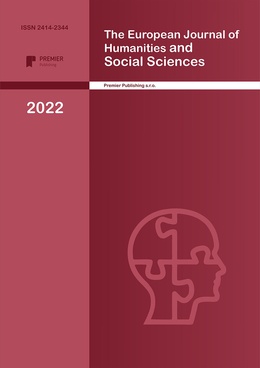Trip Without a Time Machine: How World War II Influenced Themes in American Science Fiction Literature
Authors
Xinlin Cao

Share
Annotation
In postwar-World War II America, works by prominent science fiction creators of the time, from John W. Campbell to Kurt Vonnegut, included topics directly related to the war. Tensions from military and political events influenced the appearance of thematic depictions of negative attitudes about the war.
Keywords
Authors
Xinlin Cao

Share
References:
[1] Treaty of Versailles, June 28, 1919, 163. https://www.census.gov/history/pdf/treaty_of_versailles-112018.pdf
[2] Paul Boyer, The Enduring Vision: History of the American People (Boston: Wadsworth, 2013), pp. 613-614.
[3] Take A Closer Look: America Goes to War,” The National WWII Museum | New Orleans, Accessed November 8, 2021, https://www.nationalww2museum.org/students-teachers/student-resources/research-starters/america-goes-war-take-closer-look.
[4] Alec Nevala-Lee “How Astounding Saw the Future,” The New York Times, January 10, 2019, https://www.nytimes.com/2019/01/10/books/review/astounding-science-fiction-magazine.html.
[5] Robert Scholes and Eric S. Rabkin, Science Fiction: History, Science, Vision (New York: Oxford University Press, 1977).
[6] James Gunn, Alternate Worlds: The Illustrated History of Science Fiction (London: Prentice-Hall International, 1975), p. 132.
[7] Thomas Disch, The Dreams Our Stuff Is Made Of: How Science Fiction Conquered the World (New York: The Free Press, 1998), p. 165.
[8] Robert A. Heinlein “Blowups Happen,” Astounding Science Fiction, September 1940, http://www.luminist.org/archives/SF/AST.htm.
[9] Donald A. Wollheim, The Universe Makers: Science Fiction Today, (New York: Harper & Row, 1971), p. 1.
[10] “1933 Book Burnings,” United States Holocaust Memorial Museum, Accessed December 12, 2021, https://www.ushmm.org/collections/bibliography/1933-book-burnings#h11.
[11] Ray Bradbury, Fahrenheit 451, (New York: Simon & Schuster Paperbacks, 2013), p. 56, 58, 51, 114, 16.
[12] “McCarthyism and the Red Scare,” Miller Center, March 3, 2020, https://millercenter.org/the-presidency/educational-resources/age-of-eisenhower/mcarthyism-red-scare.
[13] Sam, Weller, “Did Ray Bradbury Do a 180 on 'Fahrenheit 451'?” The Dallas Morning News, November 8, 2018, https://www.dallasnews.com/arts-entertainment/books/2018/11/08/did-ray-bradbury-do-a-180-on-fahrenheit-451/.
[14] David Mogen, Ray Bradbury, (Boston, MA: Twayne Publishers, 1986), p. 107.
[15] Vonnegut, Kurt. Slaughterhouse-Five, or the Children Crusade: A Duty-Dance with Death. New York, NY: Dell Publishing, 1969. p. 1, 2, 3, 14, 19, 53, 90, 101


